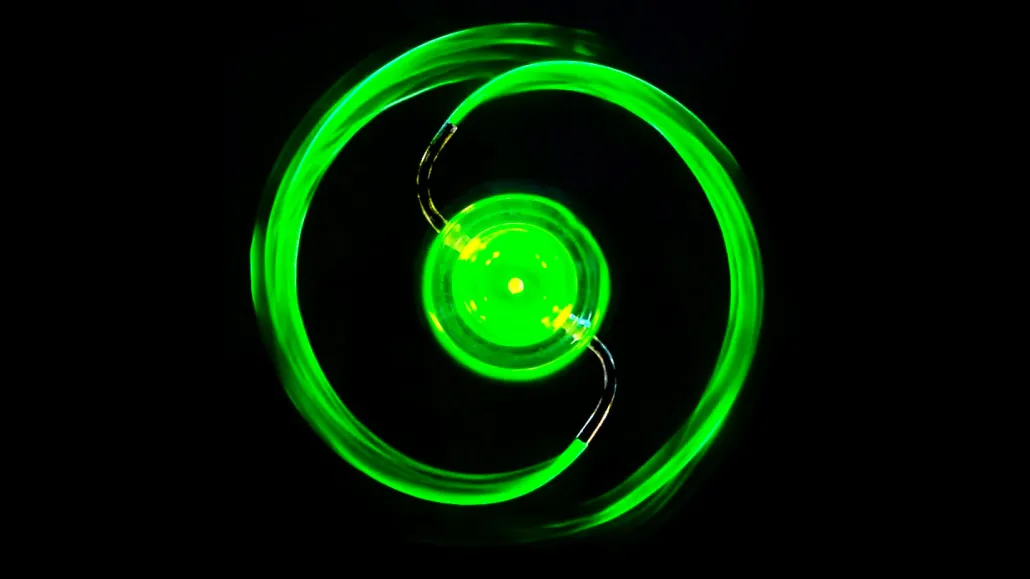What happens when lawn sprinklers suck in water? Physicists answer that quirky question
Jets and vortices in the sprinkler make it twirl in the opposite way from when it spews water

Conservation of momentum explains the movements of an S-shaped sprinkler, which spins counterclockwise as it expels streams of water (visualized with green dye) when submerged in a tank of water. Physicists want to understand what happens when the sprinkler sucks water in instead.
Applied Math Lab/NYU